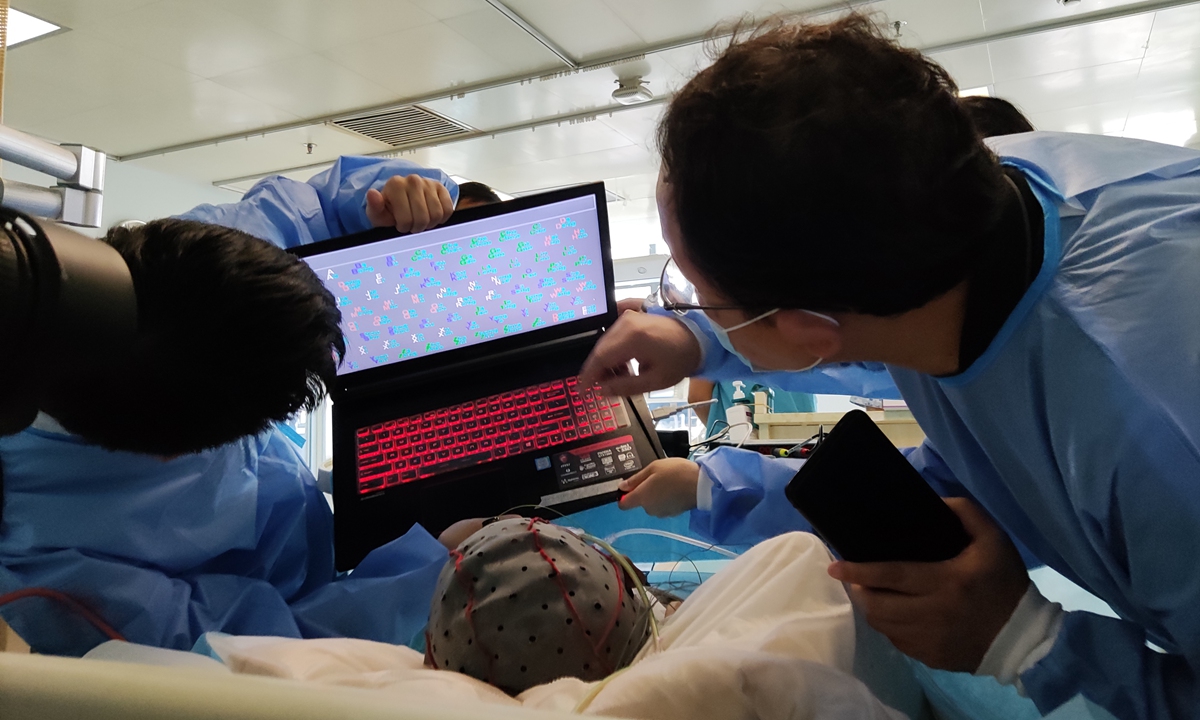Brain-AI Technology Interface
"Our goal is to develop a novel type of BCI [brain-computer interface], a cognitive BCI that's more user-friendly.""We think if we can involve cognitive signals -- what you want to pick up, for instance -- then we can refine the kinematics from the motor cortex and get a much more efficient trajectory, something that is closer to what the brain actually does."Dr.Adam Sachs, director, neuromodulation and functional neurosurgery, The Ottawa Hospital
 |
| Eros Dervishi for STAT |
"When I see somebody in the neuro-intensive care unit who has had an acute stroke and has lost the ability to move or communicate, I'd like to be able to say, 'I'm very sorry this has happened, but we can restore your ability to use the technologies you were using before this happened, and you'll be able to use them again tomorrow.""And we are getting closer to being able to tell someone who has been diagnosed with ALS, 'even while we continue to seek out a cure, you will never lose the ability to communicate.' This work is a step toward those goals."Dr. Leigh Hochberg of Brown University, Massachusetts General Hospital and the Providence VA Medical Center
There are roughly 86 billion nerve cells, along with trillions of connections in the human brain. That level of complexity ensures that attempts to unlock the byways of the brain's operation represents an immense scientific endeavour. Associate professor with the University of Ottawa's Brain and Mind Research Institute, Dr.Adam Sachs feels the technology he is working with has the potential to enormously improve lives of people with severe disabilities. He feels that one day in the near future his research may become part of a system to bypass a spinal cord injury, sending the brain's signals directly to the muscles.
Dr.Sachs has launched a clinical trial with the purpose of connecting the brains of paralyzed patients to computers. He envisions his plans succeeding in decoding brain signals, enabling them to be converted into actions. What he envisions is viewed by medical science as an advanced critical step toward the day when those suffering spinal cord injuries, stroke damage, or from ALS, will be enabled to use their minds in the control of robotic limbs, wheelchairs or cellphones.
This is set to be the first trial of its kind to take place in Canada. Study participants are to have tiny sensors surgically implanted into two areas of the brain: the prefrontal and motor cortexes; sensors to measure the electrical activity in individual brain cells and in groups of neurons referred to as neuronal ensembles, believed to be essential building blocks of brain activity. Study participants will work with researchers three or four times weekly on understanding and mapping energy patterns in their brains through repeated, imagined tasks.
"During those sessions, we'll learn about the function of the brain and how to develop algorithms to best control a brain-computer interface", explained Dr.Sachs. At the conclusion of the study the implanted sensors in the outermost layer of the brain are to be removed. The science of brain-computer interface is a rapidly expanding area of research throughout the global scientific community. Companies, including Neuralink, Elon Musk's program, are attempting the development of commercial applications for the technology meant to translate brain signals into computer-assisted action.
As example, a wireless brain sensor is being developed by Neuralink. A recently released video of a monkey with the implants playing a video game through thinking about how to move its paddles is a production through Neuralink. A 65-year-old man paralyzed from his neck down, wrote 18 words per minute at Stanford University, with the use of a brain-computer interface. He imagined what he was writing in longhand and his selection of letters turned out over 94 percent accurate, a study published in Nature divulged.
The plan by Stanford scientists is to advance the research by the use of interface to detect syllables forming in an individual's brain, to refashion them into speech, aided by a computer. Researchers at the University of Pittsburgh developed a method giving paralyzed people biofeedback through mimicking the sensation of touch by way of a brain-computer interface. Users found it easier through tactile information to take a sip of water using a robotic arm.
It is Dr. Sachs's intention to improve on current brain-computer interfaces through decoding signals from the prefrontal and motor cortexes. The motor cortex acts as the control centre for the body's muscles and limbs, which is where most research in the field now concentrates; the motor cortexes. Whereas the prefrontal cortex is known to be a particularly adaptable part of the brain, involved with attention, planning, decision-making and problem-solving.
Artificial intelligence will be applied by the Ottawa researchers to decode brain signals captured by the implanted sensors through participants being asked to think of routine tasks like reaching for a glass of water. Researchers then will look to recognize patterns in the neuronal activity to identify its key components, upon which machine-learning algorithms are meant to be used to predict intention -- or trajectory -- of that activity.
A core part of the research study, observes Dr.Sachs, is to optimize the algorithms. Those participating in the study will be instructed to move robotic limbs or to spell words through a brain-computer interface interpreting their intentions. The clinical trial at The Ottawa Hospital Research Institute where sensors are to be implanted, will have the capacity to capture electrical activity of a few hundred brain cells at any single opportunity.
 |
| Photo: Courtesy of Wang Gang |
Labels: Brain-Computer Interface, Brain-Muscle Interface, Neuroscience, Research
0 Comments:
Post a Comment
<< Home